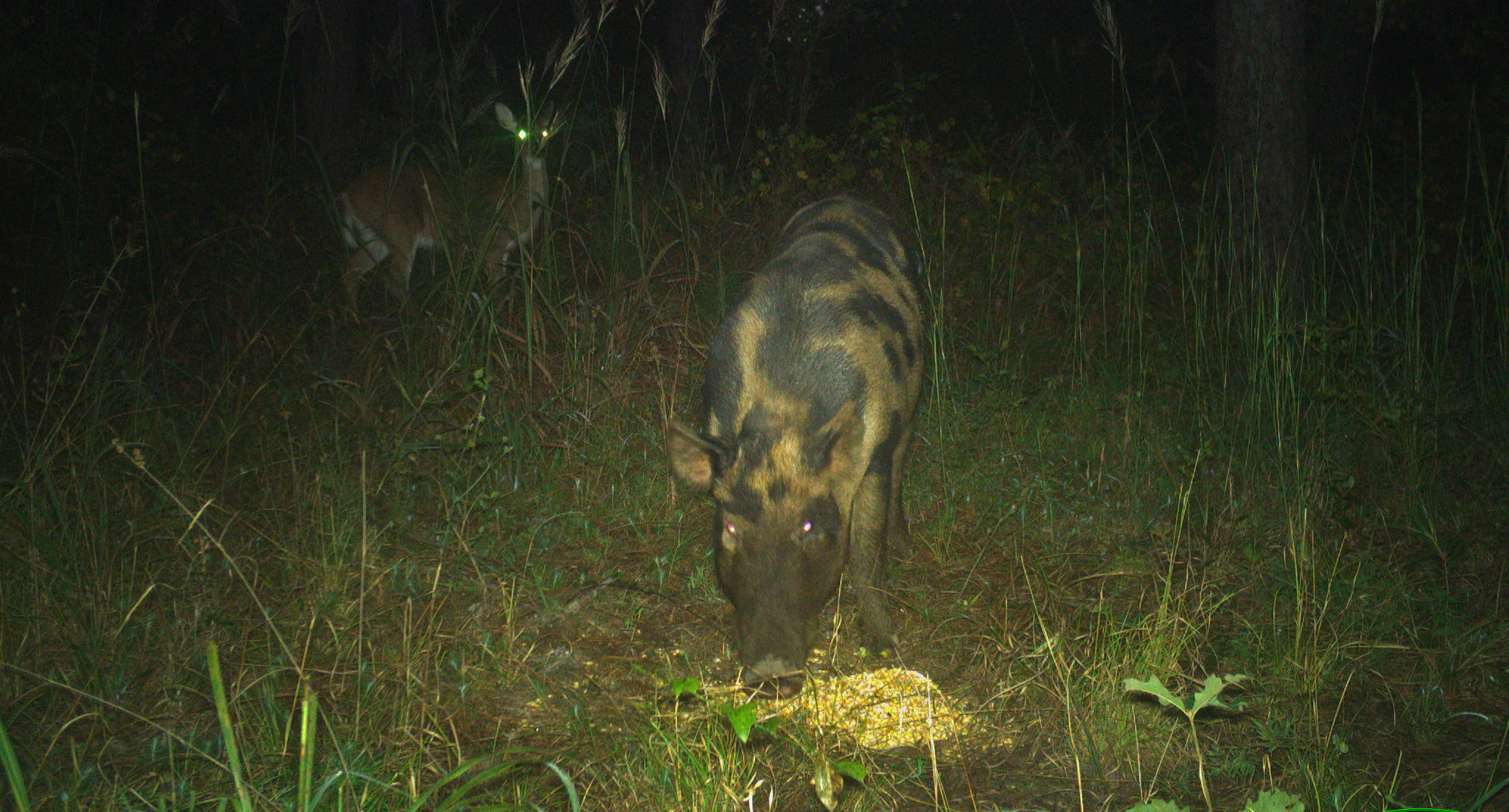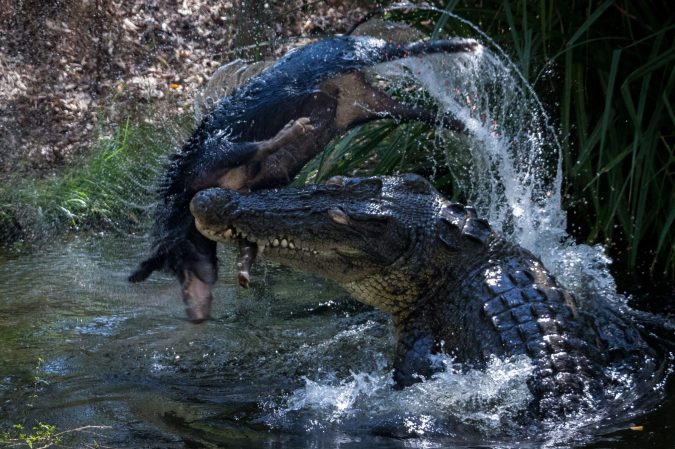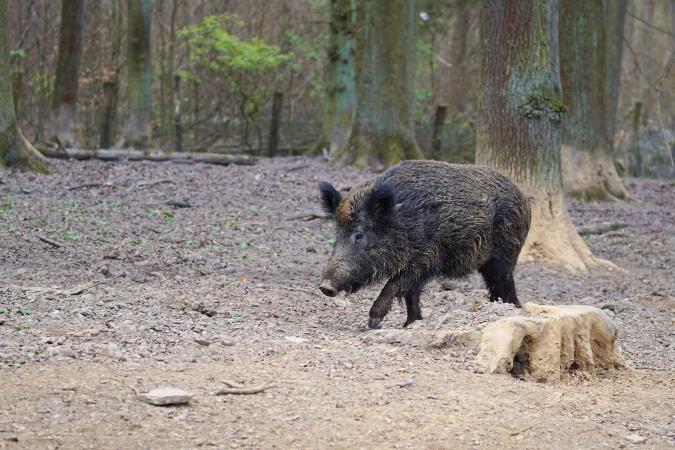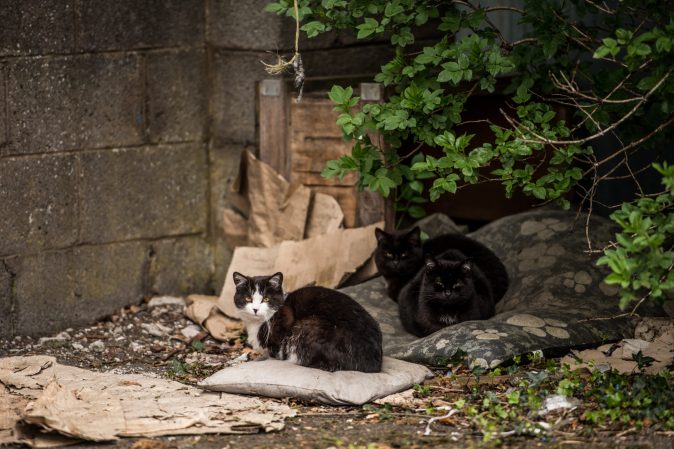America’s hunters and wildlife managers are well into the feral hog war. More than 6 million wild pigs roam the country, gobbling down native flora and outcompeting native fauna. They’re also hell on agricultural crops. According to the U.S. Department of Agriculture, hogs cause $1.5 billion of damage annually.
“Researchers think that number may be closer to $2.5 billion now, but more research needs to be done to determine an accurate figure,” says Ben Westfall, the National Deer Association’s conservation coordinator.
There are massive efforts by government agencies and private landowners to cull feral hogs and stop their spread. Whitetail deer managers are at the tip of the spear, because pigs can also have a negative impact on deer.
Unfortunately, there hasn’t been a lot of formal, university-led research on how pigs impact whitetails. But a lot of anecdotes from the field are currently being gathered and analyzed by large-scale land managers. Here’s what the experts say about how hogs impact whitetails, how possible it is to remove hogs from deer habitat, and how deer react once hogs are gone.
Hogs By the Numbers
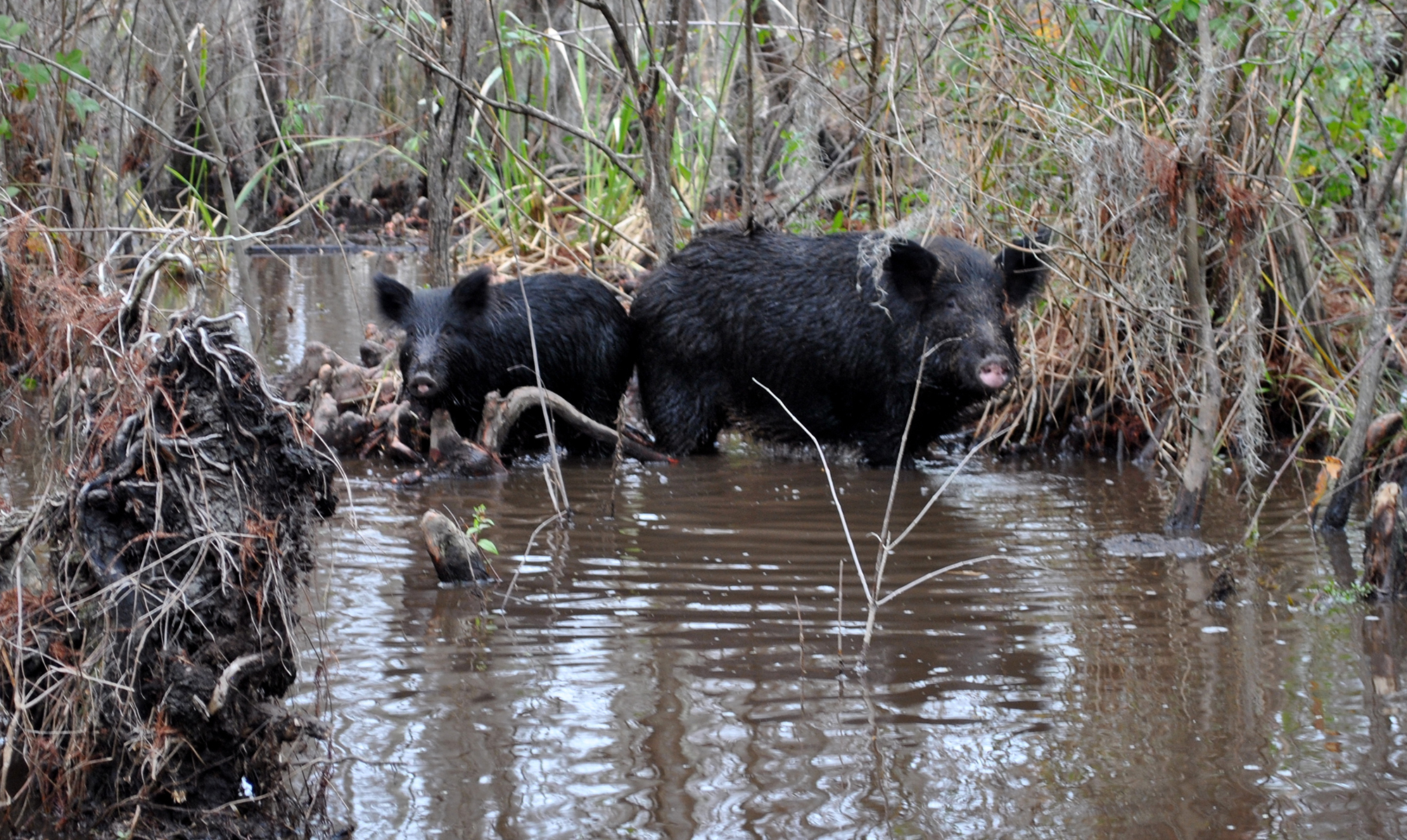
According to a recent report from Bowhunting.net, most states now have sustainable populations of wild hogs, but there are still several holdouts in the northern half of the country.
READ NEXT: Wyoming and Montana Brace for Wild Hog Invasion from Neighboring States and Canada
States Without Reported Hog Populations
- Alaska
- Colorado
- Connecticut
- Delaware
- Idaho
- Maryland
- Massachusetts
- Minnesota
- Montana
- Nebraska
- New York
- North Dakota
- Rhode Island
- South Dakota
- Vermont
- Wyoming
On the flip side, 14 states have hog populations of at least 100,000 animals.
States With Largest Hog Populations
- Missouri: 100,000
- North Carolina: 100,000
- Arkansas: 200,000
- Mississippi: 200,000
- Alabama: 250,000)
- California: 400,000
- Hawaii: 400,000
- South Carolina: 450,000
- Florida: 500,000
- New Mexico: 500,000
- Georgia: 600,000
- Louisiana: 750,000
- Oklahoma: 1.5 million
- Texas: 3 million
Feral Pigs Displace Deer

When hogs first appear on the scene, whitetails tend to avoid them, meaning they settle for lower quality bedding areas and food sources. This is even truer for mature bucks, which seem to have less tolerance for hogs than younger bucks, does, and fawns do.
However, in areas where hogs have been present for years, deer seem to get used to them.
“Based on my observations, deer do adapt to hogs if they’ve been present a long time,” says, Dr. Grant Woods, a renowned deer biologist and founder of Growing Deer TV. “I see deer in South Florida ignoring hogs unless they get within 30 yards or so. I’m sure where hogs are new neighbors, deer give hogs more space. There’s certainly more food for deer if hogs are removed, and I suspect they’d be a bit calmer.”
Still, whitetails can be forced to move out of areas if hogs over-browse habitat and dominate resources. The higher the hog densities, the worse this problem gets.
“Deer and wild hogs share many of the same resources, especially during the summer when deer rely primarily on forbs,” Westfall says. “Forbs provide deer with the protein necessary for antler growth, milk production in lactating does and overall increase in body size which can all be directly impacted by the presence of hogs.
“Research suggests that up to 64% of a hog’s diet is mast, which is in direct competition with deer and other wildlife during the growing season,” Westfall continues. “Agencies spend a lot of time and money managing the habitat to stimulate the growth of preferred forage for deer and other wildlife, and hogs directly impact those efforts.”
Hunters are also seeing this dynamic play out on the properties they hunt. Kinion Bankston of Southern Boyz Outdoors has been dealing with hogs for decades.
“It’s more about the food sources in the area,” he says. “If the hogs eat all the food, the deer will move to a new food source and return once the food source is available.”
The good news is that when hogs are removed (or severely culled) from the landscape, deer seem to bounce back. Anecdotes from the field are somewhat mixed but they are mostly promising. According to most deer managers I spoke with, whitetails generally return soon after hogs are removed. This can take longer in areas where the habitat is seriously degraded, but under average conditions, whitetails often return rather quickly. This is especially true in areas that offer adequate bedding areas, along with food, water, and security cover.
Is It Possible to Eradicate Hogs?

Once feral pigs become established, landowners can remove most of the hogs from their property. However, management is often very costly, and if neighboring landowners aren’t applying equal or greater management efforts, hog populations will continue to grow.
Hogs are incredibly difficult to eradicate because they are intelligent, they eat a wide range of food sources, and sows have approximately two litters of three to eight pigs each year.
“One of the biggest issues is their incredible population growth rate,” Westfall explains. “Populations can spread locally at an alarming rate due primarily to their adaptive nature, human assistance, and their phenomenal reproductive capabilities. Sows reach breeding age at six to eight months and can produce two litters per year. This rapid reproduction makes it extremely difficult to remove them from the landscape and limit their spread to new areas.”
But that shouldn’t stop landowners or state game agencies from trying to reduce hog numbers.
Culling Hogs on Private Lands
Feral pig managers have a mighty steep hill to climb. Typical hunting tactics have proven to be mostly useless as management tools. Sure, hog hunting is fun. And it might remove a porker or two from the property. But on a landscape population level, it doesn’t accomplish much, and it can make pigs even warier. Even when running dogs, hunting doesn’t remove enough hogs to decrease overall population densities.
Furthermore, fertility control isn’t in heavy use yet. The heavily debated toxicant called Warfarin isn’t permitted in any state, and there’s a chance it won’t ever be.
Gunning hogs from helicopters is another common tactic, especially in open settings like Texas and Oklahoma. However, pigs are smart, and if they survive a helicopter attempt, they become nocturnal quickly. That said, new technologies are increasing the efficiency of this tactic.
“Some states are beginning to implement drones with thermal imagery into their aerial gunning efforts,” Westfall said. “Justine Smith, a graduate student at the University of Georgia found that aerial gunning from helicopters tends to drive hogs to use more wooded cover and to become nocturnal, making it difficult to find individuals that separated from the group, causing the cost per pig to go up as they scatter. The thermal imagery allows a drone pilot to locate the holdouts and direct the helicopter to the exact location to dispatch the hogs, rather than having the helicopter fly around searching.”
READ NEXT: Best Thermal Scopes
For effective hog management, mass trapping has been the most proven tactic that is in widespread use today.
“I assist a few landowners that keep hog populations at bay [in areas with lots of hogs],” Woods says. “However, this requires a lot of time and resources. It almost always [requires] trapping.”
While smaller box traps aren’t ideal, larger traps designed to catch numerous hogs simultaneously are quite effective. Corral traps with trap gates or drop traps paired with remote triggering are very capable of snaring entire sounders, which is the ultimate goal.
Generally speaking, it’s easier to trap pigs when food is scarce in the winter and early spring. This is when bait is most effective. It’s also best to trap when the most sows are pregnant. (This is easier than trying to trap sows and their piglets together.) Capturing the entire sounder is the goal—from the biggest sows down to the smallest members of the group. Of course, hogs like to stay closer to water, so bottomlands, marshes, swamps, and other lowland areas are all good locations to try.
“The best thing the average land manager can do is cooperate with their state wildlife agency and familiarize themselves with the management efforts taking place as well as various programs that may be available to them,” Westfall said. “Many states have hog specific or cost-share programs in which they will work with landowners to help control the problem. It is our responsibility as landowners, managers, and hunters to know what our state wildlife agency is doing, understand that their efforts and methods are based on scientific research, and do our best to assist with their efforts in any way that we can.”
Pig Management Programs
Hogs negatively impact the state wildlife agencies in 36% of states. Because of all the issues wild hogs create, nearly half of all U.S. states have dedicated feral hog task forces.
“A dedicated task force or committee is specifically allocated to feral hog eradication efforts,” Westfall says. “It is extremely important that states allocate the necessary resources such as funding or manpower to focus solely on wild hog efforts.”
Missouri and Tennessee are two examples of states that are taking aggressive management measures. The Missouri Department of Conservation created the Missouri Feral Hog Elimination Partnership, which encourages landowners to report hog sightings to the agency rather than shoot them. They employ approximately 40 full-time professional trappers who come out and set traps to remove entire sounders (at no cost to the landowner). The Tennessee Wildlife Resources Agency has a similar program.
“It has also helped reduce wild hog impacts, particularly in the central region of [Tennessee] by issuing a statewide ban on transport and release,” Westfall said. “They reclassified hogs as ‘a species deemed destructive,’ which allowed them to dedicate a task force specific to eradication efforts.”
Without a doubt, wild hogs are taking away management resources from important native species.
“Wild hogs impact state agencies in a variety of ways,” Westfall says. “They destroy habitat, spread disease, and directly compete with native species. According to our 2023 Deer Report, eight states suggested that wild hogs are negatively impacting their agency’s deer management programs specifically. This can include pulling staff away from other responsibilities, financial impacts, habitat destruction, destroying access roads and fences, and even damaging equipment due to their wallowing behavior creating large mudholes.”
It’s clear that more funding for wild hog management will likely have to come through federal programs. “Fortunately, as part of the 2018 farm bill, the USDA Feral Swine Eradication and Control Pilot Program has allocated over $75 million over the life of the bill,” Westfall says. “This program was designed to help states fund wild hog control and eradication efforts through a joint partnership with the USDA APHIS and NRCS.”
How to Know If You Have Feral Pigs
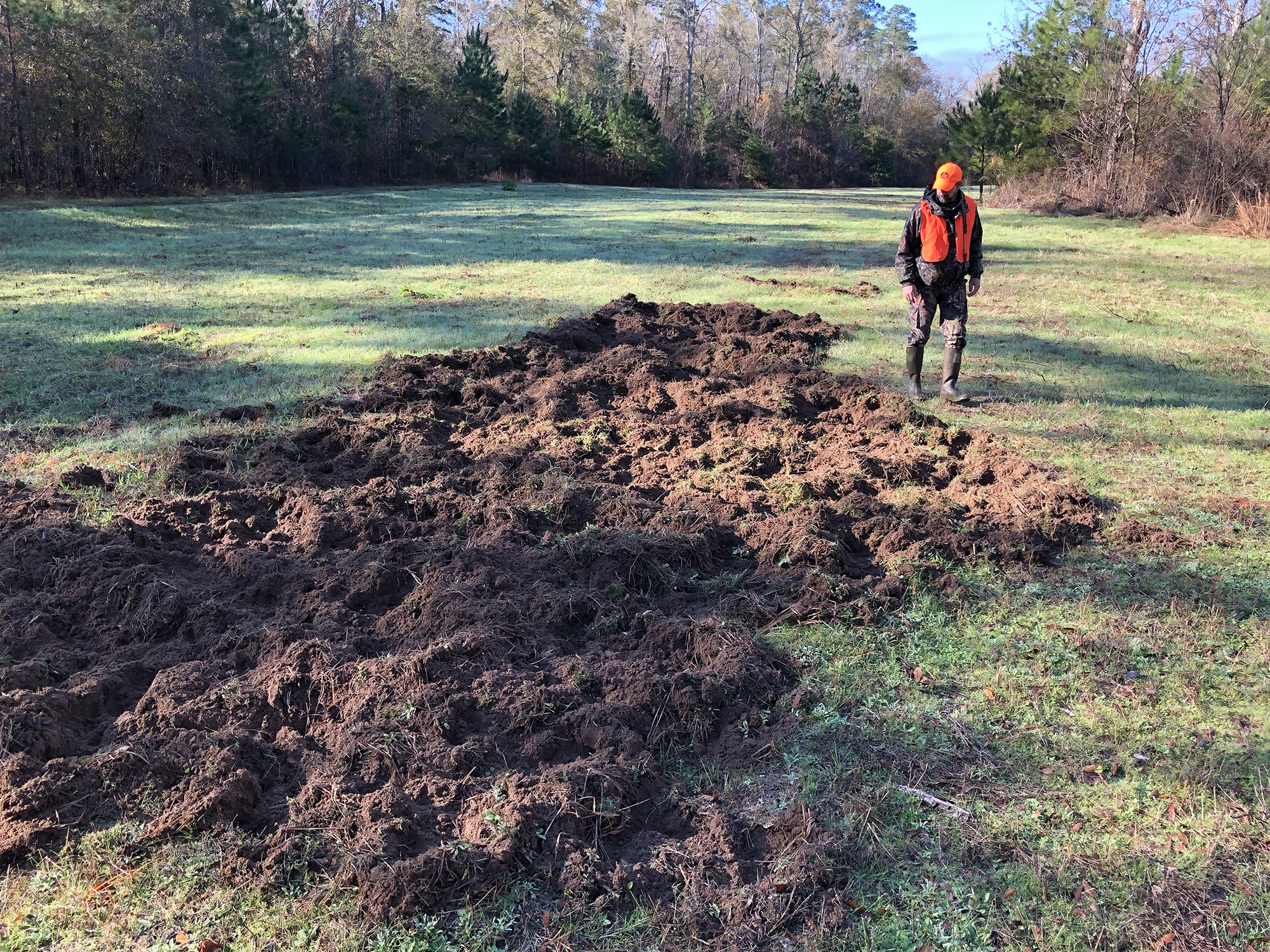
There are numerous wild hog signs to watch for. Tracks, scat, rubs, rooting, and wallows are all telltale signs of their presence. Identifying sign can sometimes clue you in more quickly than spotting one during the day, or catching one on trail camera. This is important, because you want to begin managing (eradicating) them as soon as possible.
Hog Tracks vs. Deer Tracks
Hog tracks might initially look like whitetail hoof prints, but they are distinctly different. First, the toes are more rounded than pointed. The heel is more rounded, too. And third, a hog’s dewclaws sit further out to the side than a whitetail’s, which fall more in line with the heel. Tracks from a hog’s dewclaws are also pointed, while a whitetail’s are more rounded.
More Hog Sign
Hog excrement can take on multiple forms depending on the time of year, foods they consume, and overall state of health. That said, hog scat is usually tubular, and can contain signs of grasses, grain, hard mast, and more.
Wallows are just what they sound like—areas where hogs wallow in the mud. If you see a wet, swampy area with a lot of exposed mud and hog tracks, it’s likely a wallow. Hogs use these to mitigate insects and heat.
Tree rubs are also indicative of hogs. This is where mud is discarded from hog sides and backs onto the lower portions of tree trunks. Typically, hogs rub against trees after visiting wallows. A well-worn tree will eventually have smooth bark.
Rooting is the classic sign that hogs have arrived. Oftentimes, it appears as if someone used a tiller to churn up the ground. Hogs do this in search of food, and it can leave wakes of destruction over large areas.
If you find rooting or other hog sign on your property, don’t think you can eradicate the hogs just by hunting them. Instead, work with your state agency to trap the hogs and remove them quickly. Whitetail deer and the other native animals on your property will benefit.
